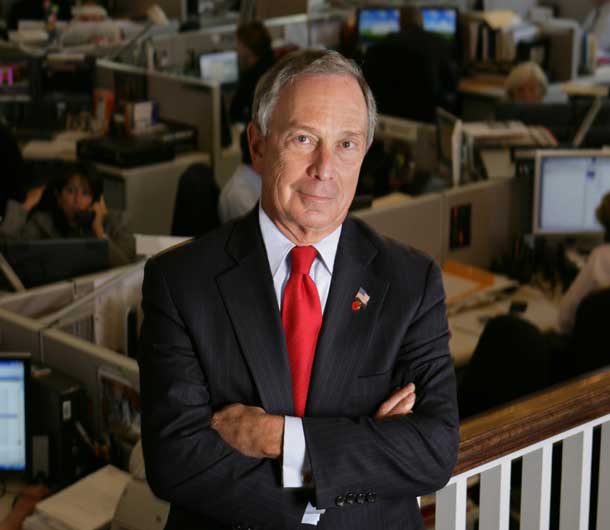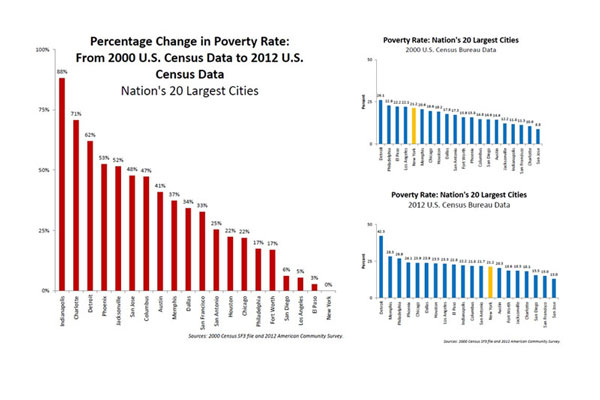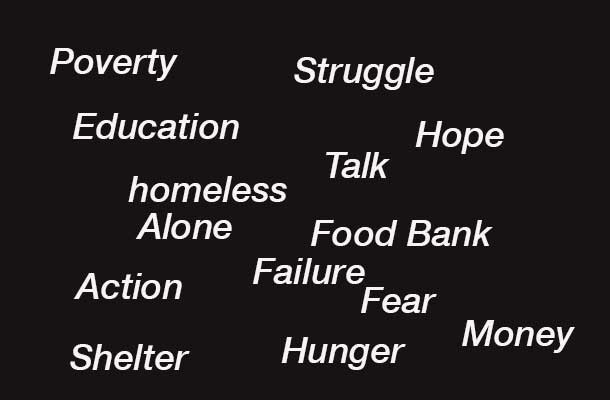

NEW YORK – Mayor Michael Bloomberg has been recognized for the results in the fight against poverty in New York. “Under Mayor Bloomberg’s leadership New York City has aggressively fought poverty through a willingness to challenge prevailing orthodoxies and a determination to discover real and lasting solutions,” said Deputy Mayor Gibbs. “The Mayor’s commitment to education reform, a strong, five-borough economic development strategy, and programs to reach those most left out of the city’s economic mainstream, has born results seen in no other large city and helped our black and Latino young men in particular.”
[sws_pullquote_right] There is no word on a draft Mayor Bloomberg campaign starting in the City of Toronto. [/sws_pullquote_right]
Mayor Bloomberg stated, “It’s an honor to receive this award – and I accept it on behalf of everyone in our Administration who has worked so hard to fight poverty over the past 12 years. I think it’s fair to say that no American city has battled poverty more directly, or with more determination and innovation, than New York. And while poverty in our city is still much too high, there is no doubt that – without the extraordinary investments we’ve made – it would be much higher.
Poverty Rates Climbing Fast

“To understand the impact we’ve had, we conducted an analysis of poverty levels in the nation’s 21 largest cities. Here’s what we learned: Since the 2000 census, every single large city has seen its poverty rate go up. Except one: New York. In Philadelphia, the increase was 17 percent. Chicago and Houston: 22 percent. San Francisco and Dallas: 33 and 34 percent, respectively. Memphis: 37 percent. Austin: 41 percent. Phoenix: 53 percent. Detroit: 62 percent. And in Indianapolis, poverty rates have increased by 88 percent”.
“The average increase in poverty in the nation’s other major cities has been 36 percent. And across the whole nation, the increase has been 28 percent. Here in New York City – zero. And that’s after the deepest national recession since the Great Depression.
Mayor Michael R. Bloomberg and Deputy Mayor for Health and Human Services Linda I. Gibbs released a new analysis of poverty rates in the nation’s 20 largest cities, which shows New York City is the only top 20 city that did not experience an increase in its poverty rate since the 2000 U.S. Census.
Average Poverty Rate increase 28%
The increase in poverty rates in other large cities ranged from three percent in El Paso, TX to 88 percent in Indianapolis, IN, with an average poverty rate increase of 36 percent. During the same time period the poverty rate for the United States as a whole increased 28 percent, while New York City’s poverty rate remained flat. The City’s Center for Economic Opportunity compiled the survey, using data from the U.S. Census Bureau’s 2000 Census and 2012 American Community Survey.
Mayor Bloomberg has received the Award for Public Leadership from the Children’s Aid Society for his Administration’s work combating poverty.
“Mayor Bloomberg has pioneered innovative approaches to tackling America’s opportunity gap and his Center for Economic Opportunity is perhaps the only institution of its kind in the country: a city-run action tank which is constantly developing, implementing, and evaluating new ideas in the war on poverty, with an eye towards expanding those initiatives that work and learning from those that don’t,” said Richard Buery, President and CEO of the Children’s Aid Society. “Mayor Bloomberg has used his platform to shine a spotlight on poverty and has asked to be held accountable for moving the needle on it, especially for those who are most often left out of the educational and economic mainstream of our City and our country.”
“The Award for Public Leadership is being given to the nation’s leading mayor in devising and implementing programs for the poor,” said Ron Haskins, Co-director of the Brookings Center on Children and Families and Budgeting for National Priorities Project. “Mayor Bloomberg’s Center for Economic Opportunity is a hotbed of reform including a greatly improved way to measure poverty (which prompted the federal government to create its own new measure), a program that rewarded school achievement by children and their parents, reforms of high schools that were the boldest in the nation and produced stunning results, programs to get young males and former prisoners into the workforce, and many more. Equally impressive, the mayor showed that he had the courage of his convictions by demanding that most of his reforms be carefully evaluated so voters and administrators would know whether they worked – and if not, how to fix them. It will be a long time before the nation has another mayor as bold, innovative, and effective in implementing social programs that actually achieve their goals.”
Mayor Bloomberg Explains Poverty Fight
“Health and education are directly related to poverty, but so is another area that too often gets overlooked: the criminal justice system, and particularly the juvenile justice system. For too long in our city, young people who got in trouble were sent upstate to dysfunctional detention centers that didn’t even have accredited schools. It was a disgrace – and a terrible injustice perpetuated on generations of children.
“Working with Governor Cuomo and others, we passed a major reform of the system that is now keeping more juveniles in their home communities – and in school. Those kids now have a fighting chance to stay out of prison and poverty, and lead productive and healthy lives, which will benefit our whole city.
“Our Commissioner for Children’s Services, Ron Richter, has done an outstanding job – together with Vinny Schiraldi, our Probation Commissioner, and John Feinblatt, our Criminal Justice Coordinator. Ron is here tonight, as is the director of our Young Men’s Initiative, Jahmani Hylton, and our Human Resources Commissioner, Robert Doar, who has done such a great job moving people from welfare to work – and dramatically reducing the public assistance caseload, which has also played a big role in our anti-poverty efforts.
“Before I go any further, let me pause for a moment and acknowledge the real architect of our anti-poverty agenda – Deputy Mayor Linda Gibbs. She deserves a big round of applause, too. I think it’s fair to say that Linda has done more to pioneer innovative anti-poverty programs than any public servant in America.
“The Center for Economic Opportunity was her brainchild – and there’s not a government office in America that has tackled the problem of poverty more comprehensively and creatively. For too long the fight against poverty was fought using the same old tired tactics; and for too long elected officials across the country have pretended that the fight can be won simply by spending more money on the same old programs. We refused to get caught in that trap.
“We’ve pioneered new ideas – some of them controversial, but all of them worth trying. We’ve refused to shy away from hard truths about poverty, even when that ruffles some feathers. And we’ve taken a comprehensive approach by tackling the problem from all sides. I’ve talked about education and health and justice. Now let me turn to the single best anti-poverty program there is: a job.
“One of the biggest reasons that we haven’t seen the poverty increases here that other cities have experienced is that we’ve outpaced the nation in job growth and we’ve created jobs for people on all rungs of economic ladder. We’re a city of immigrants – and many New Yorkers speak only limited English. We need to be able to create jobs for them. For those who don’t have a high school diploma, for those who may have troubled personal histories, and for those who need flexible work hours so they can take care of their families.
“Deputy Mayor for Economic Development Bob Steel – and his predecessors, Dan Doctoroff and Bob Lieber – have done an outstanding job expanding economic opportunities in neighborhoods across the city. There are more private-sector jobs in New York City now than ever before. The nation still has not gained back all the jobs that were lost during the Great Recession. But here in New York City, we’ve gained back 300 percent of the jobs we lost. And most of the jobs we’ve created have been outside of Manhattan. In fact, job growth in the other four borough has been twice the rate of Manhattan’s.
“Communities outside of Manhattan have made huge comebacks thanks largely to that job growth – and to the record cuts in crime and incarceration that we’ve achieved. Over the past 12 years, incarceration rates across the nation have gone up 5 percent – while here in New York City, we’ve cut them by 32 percent. So we’re not only bucking national trends on poverty, we’re doing it on incarceration, too.
“Fighting crime is also a critical component of our anti-poverty agenda because public safety is the foundation of economic growth. The more dangerous a neighborhood, the more likely it is to be mired in poverty. If you want to fight poverty, you have to fight crime – and thanks to Ray Kelly and his team, we’ve fought it more successfully than any other major city. By cutting crime to record lows, we’ve saved thousands of lives.
“Based on statistics, we know that 90 percent of the people who are alive today – who otherwise would not be – are black and Hispanic, most of them living in poverty. If a child loses a parent to gun violence, not only is that a tragic loss of life, it can trap the child into poverty. And if a young man commits a crime and goes to prison, that can lead to a lifetime of poverty. If we want to win the fight against poverty, we have to stop both from happening. That’s why we’ve fought so hard to keep guns off the streets – and keep young men out of jail.
“The neighborhoods that have benefitted most from this work have also benefitted from an anti-poverty strategy that we invested billions of dollars in: affordable housing. No city in the country has invested more in affordable housing than we have. In fact, we’ve created or preserved enough units – 165,000 units – to house the entire city of Atlanta. Is it enough? Of course not. The whole world wants to live in New York City. But it’s a problem of success – and the alternative is a lot worse.
“Affordable housing has been an important part of our anti-poverty work – and that’s why we’ve remained committed to public housing. Most other cities are tearing down public housing. We’ve been working to expand it. We’ve invested City resources into it, even as the federal government has all but walked away from it.
“The federal government has cut NYCHA’s capital budget by 35 percent over the past decade – and NYCHA residents are paying the price. That’s why we’ve come up with a plan to generate revenue to support NYCHA, while also increasing the supply of affordable housing. Deputy Mayor Steel and John Rhea both deserve a lot of credit for developing the plan, we’re hopeful that the next Administration will embrace it, in some form.
“Our anti-poverty work has focused on job creation, education, public health, justice, affordable housing, social services, and policies that help working families, like the local Earned Income Tax Credit and Child Care Tax Credit we adopted. As a city, we are committed to supporting and helping those most in need: the infirm, the elderly, the children, the unemployed, the homeless, the disabled – and those who fall into poverty or get trapped in it. And as an administration, we have invested an enormous amount of energy and resources into that mission.
“The fight against poverty is long and hard – but how doggedly we fight it reflects our values as a city. We’ve been lucky to have such strong partners in this fight, like the Children’s Aid Society. So I want to thank everyone here tonight for supporting this important organization, which does so much good in our city. And I want to thank you for this award, which I’m honor to share with all the members of our Administration.












